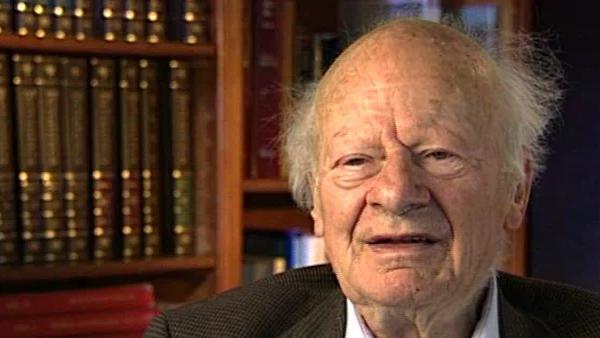NEXT STORY

James Wilson’s theory of supernovae
RELATED STORIES

NEXT STORY

James Wilson’s theory of supernovae
RELATED STORIES


|
Views | Duration | |
|---|---|---|---|
| 131. Stages in the stellar evolution theory | 1 | 291 | 03:34 |
| 132. Gerald Brown suggests solving the problem of supernova | 318 | 02:02 | |
| 133. Figuring how a supernova happens | 286 | 03:18 | |
| 134. James Wilson’s theory of supernovae | 301 | 03:02 | |
| 135. More on supernovae, the gain point | 251 | 03:05 | |
| 136. Supernova shocks | 262 | 03:44 | |
| 137. Accelerating shocks in supernovae | 247 | 02:58 | |
| 138. The 1987 supernova | 272 | 03:00 | |
| 139. Supernovas and the origin of the elements | 263 | 03:31 | |
| 140. Gerry Brown speculates on the formation of binary neutron stars | 256 | 02:35 |


About the collapse [of a star] there had been a good paper already by Arnett which followed the collapse until about, oh a millisecond, one-thousandth of a second before complete collapse. I should mention that the collapse takes about a second, and you have to imagine the mass which is collapsing is about the mass of a white dwarf, and what happens is that this central core of the big star reaches the Chandrasekhar Limit of Stability just as it exists in a white dwarf, about one-and-a-half solar masses. Now Arnett had done it very well, but he as well as many other people, especially Colgate at Los Alamos laboratory, had thought that the collapse stops at the density maybe one-tenth the density of nuclear matter. Well Brown and I found out this was impossible, there is nothing to stop collapse as long as the only force you have available is the Fermi pressure of the electrons in the star, the pressure which... which sustains the white dwarf. You have to get another force into play, and the best force you have available of course is the nuclear force. But a nuclear force will come in only when you get beyond the density of normal nuclei. When you get beyond that density, then of course you create pressure and that pressure increases very rapidly as you go beyond nuclear density. So Gerald Brown and I and two other people investigated this, concluded that you had to go way beyond nuclear density, maybe three times, four times, before you could stop that in-fall, and then you could stop the in-fall of the... of the matter outside. However, we also thought that this would be sufficient to give you a rebound which then would expel the outside of the star.
The late German-American physicist Hans Bethe once described himself as the H-bomb's midwife. He left Nazi Germany in 1933, after which he helped develop the first atomic bomb, won the Nobel Prize in Physics in 1967 for his contribution to the theory of nuclear reactions, advocated tighter controls over nuclear weapons and campaigned vigorously for the peaceful use of nuclear energy.
Title: Figuring how a supernova happens
Listeners: Sam Schweber
Silvan Sam Schweber is the Koret Professor of the History of Ideas and Professor of Physics at Brandeis University, and a Faculty Associate in the Department of the History of Science at Harvard University. He is the author of a history of the development of quantum electro mechanics, "QED and the men who made it", and has recently completed a biography of Hans Bethe and the history of nuclear weapons development, "In the Shadow of the Bomb: Oppenheimer, Bethe, and the Moral Responsibility of the Scientist" (Princeton University Press, 2000).
Tags: Chandrasekhar limit, W David Arnett, Stirling Colgate, Gerald Brown
Duration: 3 minutes, 18 seconds
Date story recorded: December 1996
Date story went live: 24 January 2008